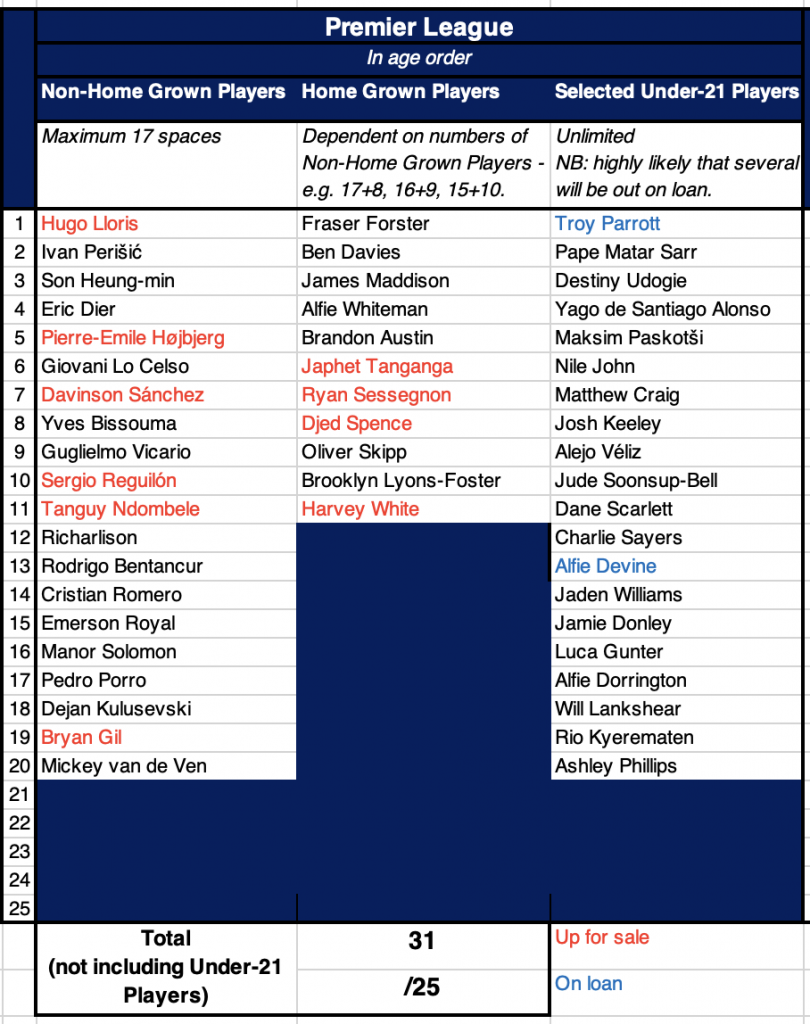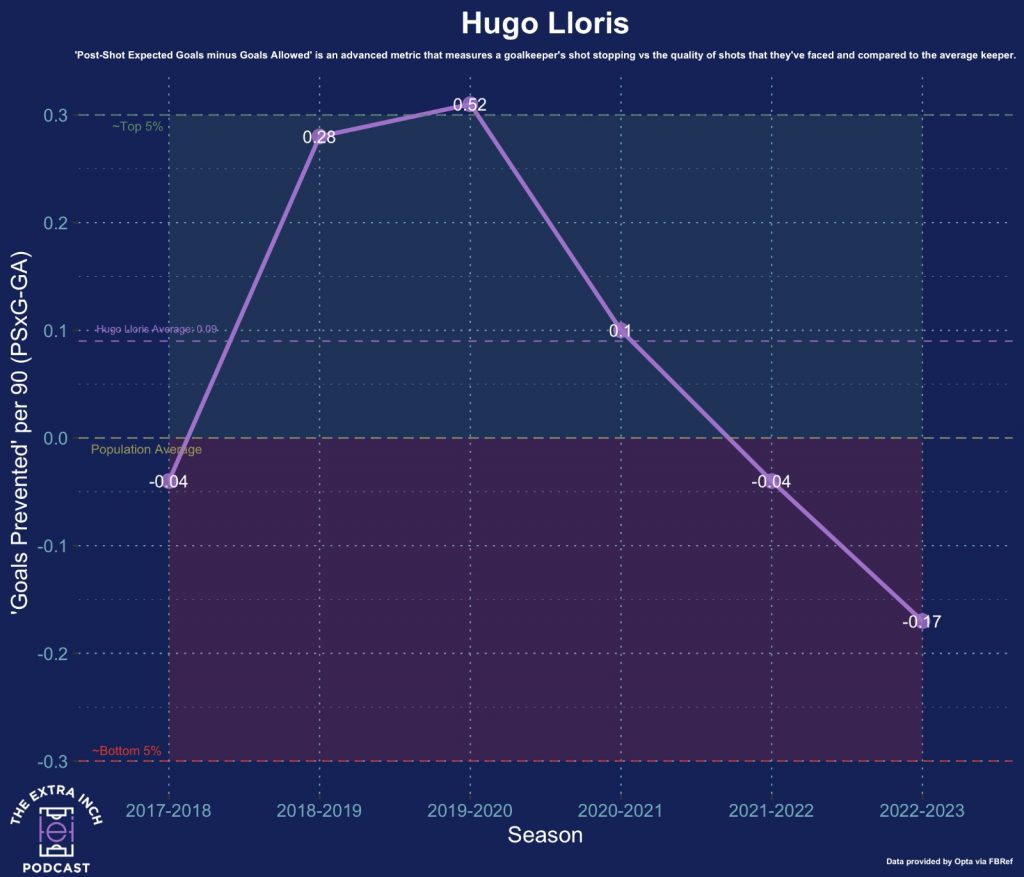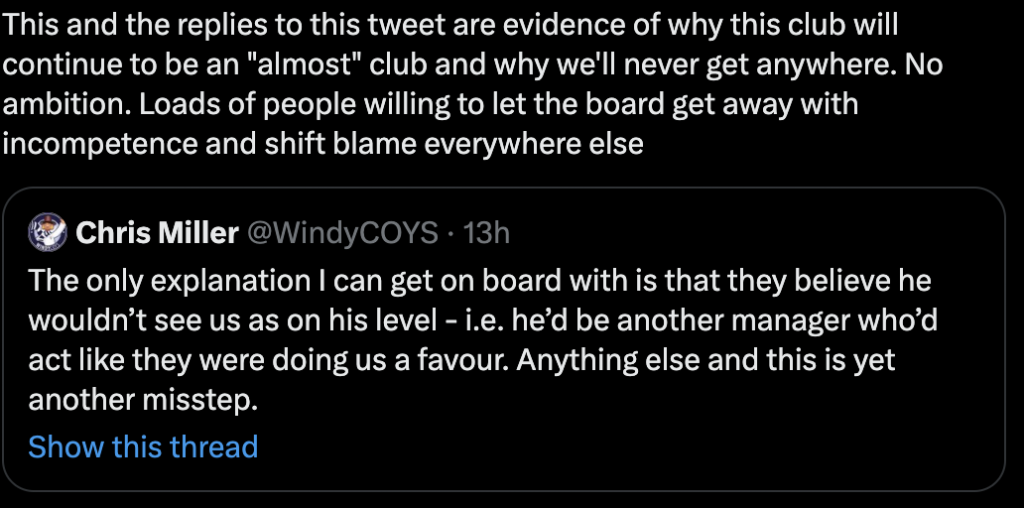Transfer Window Thoughts
Forgive me for being a few days late on this, I’m currently on holiday and have been writing it during my limited screen time (which I heartily recommend). As an aside, I could not recommend Hvar more as a relaxing holiday destination.
We went into the summer knowing that there were some critical areas of the team and squad requiring improvement. The appointment of Ange Postecoglou changed these a little, understanding that the new system required specific characteristics and skill sets. For me the key areas for focus were goalkeeper, centre-back, creative midfielder and – particularly if Kane were to leave – a forward.
I think we’ve managed to tackle all of these priorities fairly effectively. What we’ve really struggled to do, though, is add depth — more on that later, but broadly: it’s good that we’re only playing one game a week, as we are going to need to stay fit and injury-free.
Goalkeeper
Guglielmo Vicario is already proving his worth, his ability with his feet is as impressive as his traditional goalkeeper attributes. This is critical for Ange-ball, and we saw in the League Cup exit to Fulham how much the drop-off is to Fraser Forster in terms of our ability to build up effectively. Vicario was a good price, is a good age and seems a good character. I’m really happy with this transfer.
Centre-back
Micky van de Ven is a baller. He’s a good foil for Cuti Romero because he’s less of a maniac, whilst still being Actually Good At Football. He can pass, he can carry, he can play out of tight spaces. He’s also strong, rapid, a good reader, and seems a great fit for the high line. He’s going to be a huge favourite.
Creative midfielder
James Maddison fits Tottenham like a hand in a glove. We’ve wanted to sign him since he was a teenager but it has happened when he’s at the peak of his powers, and for a knockdown price because he was approaching the end of his contract. We got him for around half what a player of his ability should be worth. He is the closest thing we’ve had to a Christian Eriksen since he left (and boy has he been badly missed). When you don’t have a creative player like this, you can’t always quite put your finger on what’s missing — because your team is seemingly doing all of the football things, without this sprinkling of genius — and you end up getting frustrated at players that simply don’t have it in their lockers. Maddison’s vision and execution are exceptional. He can take the ball in tricky situations and look after it, but he can also pick locks that look impenetrable. He can change the tempo with injections of forward thrusts on the ball or zipped passes or, conversely, putting his foot on the ball. What a player. I know I’m going to love watching him.
Attacker
I believe, in an unusual-for-Spurs piece of forward (pun intended) planning, we had already signed our “replacement” for Harry Kane last season in Richarlison. We spent £60m doing it, and we got a player who can play both through the middle or wide on the left. He can press and harass but he can also score goals, illustrated both in the Premier League (mainly from the left) and for the Brazilian national team (nainly form the centre). Clearly he is never going to achieve the levels of output that Kane did for goals or assists — few, if any, in world football can — but he’s a good system fit and a solid player (albeit many are currently feeling doubtful of him).
My view is that Ange Postecoglou’s *system* will help to replace Kane. Indeed, the numbers of goals from defenders and midfielders already show this is already true to some extent. We have the ball more, we have the ball in the box more. Son and Kulusevski will take some time to adjust to the roles required of them when out wide. Both will adapt, because they’re very good players, but they might not be ideal for what Ange requires. With that in mind, I’m a little underwhelmed by some of our rotation options.
Brennan Johnson adds electric pace, versatility and a directness that I think will be genuinely useful. A lot of people have raised concerns over his data: it doesn’t look good when compared to other, similar forwards, or even to other similar forwards at Nottingham Forest. When you watch Nottingham Forest or Wales, however, he stands out — Nathan produced some ‘per touch’ data where things look a lot better.
I think Spurs fans who haven’t seen much of him will be pleasantly surprised by what he can bring in terms of running behind and getting onto passes from our creative passers (Maddison and Kulusevski in particular). He doesn’t have one-vs-one dribbling ability in the way you would hope for an Ange winger, but with his pace he will look to play give-and-gos and run in behind at pace. And he has good cut-backs and decent composure in front of goal. I don’t quite know where he fits in yet — right, left or centre — but I do think he’s good, albeit expensive due to the home grown premium.
Ivan Perisic, overall, had a very disappointing time under Conte as a left wing-back. He does already look marginally better under Postecoglou. He is a reasonable match for what’s needed: a winger who can go both inside and out, has the ability to beat his man, and who can cross the ball. But he is an old man now. A rapidly declining old man. A rapidly declining old man who I’m told isn’t exactly a popular member of the squad. I think we’d have let him go had an offer come in.
Despite his very solid showing against Burnley, I have some concerns over the signing of Manor Solomon (and that’s ignoring the circumstances of his transfer). I’ve watched all of his Spurs minutes, all of his Fulham minutes and some of his pre-Fulham minutes and I see a player who is quick footed and can create enough separation to allow him to get shots away when in the pocket on the left. But, he doesn’t do it *that* regularly, and can get doubled up on and crowded out easily. There’s lots of coming towards the ball when under pressure and returning it to where it’s just came from, with him 10 or 15 steps deeper than he was on receiving it. In those situations you want him to be brave and take a touch and try to turn. He’s a very situational player and those situations are: receiving on a counter 1v1 against a lesser player and coming on against tired legs. That skillset has its uses, especially against teams that leave as much space in behind as Burnley did. Glass half full, he’s a right-footed Andros Townsend (which would not be a bad thing). Glass half empty, he’s a marginal improvement on what Lucas Moura had become. Sorry, I know that’s quite a pessimistic take, especially after his providing two assists twice and everyone will yell ‘give him a chance’, but I’ve watched this player and this is what I’ve observed and one match against Burnley won’t make me do a 180 (yet) — though, I trust Ange so much that I frankly think he could get something out of nearly every player.
The most frustrating thing about the Solomon signing for me, though, is that it has clogged up a 25-man squad place, and we’ve ended up in a situation where because we didn’t have enough spaces, we had to put signings on hold. I’d rather have had Conor Gallagher in the squad than Solomon. So, with that, on to midfield.
I think, in terms of our midfield options, in an ideal world we woul want two more profiles — a goal-scoring midfielder (that isn’t the creative one — i.e. not Maddison’s role), and a back-up to Yves Bissouma at six. Conor Gallagher would have given us the profile of the former. Reports suggested that the two players Ange wanted from the off were Maddison and Gallagher. If that’s the case, I think it’s really poor that we didn’t deliver him, particularly if the primary reason we didn’t deliver him was that we did not have space.
The most suitable back-up to Yves Bissouma within the squad is Pierre-Emile Højbjerg, who himself was a central figure in our transfer window. I think there’s a recognition that he’s good enough to start at a lot of teams and, therefore, that he might want to leave in search of a starting berth. It appeared that he’d join Atlético Madrid and, frankly, I think everyone would have been happy with that (assuming they’d have paid a fair price). He’s one of the most divisive players in the Spurs squad and, in the eyes of many, linked to our recent mediocrity. Under Ange, he’s looked really useful as a game-closer, and looked genuinely really good playing as the six in the pre-season friendlies. He seems to have taken his demotion pretty well, but I still expect him to move on in January.
It looked like Bryan Gil was being made available for loan or even a permanent transfer, and there’s a part of me that’s glad that he didn’t end up leaving, since I still believe he has something to offer. He’s certainly one of our few players who has genuine 1v1 ability in wide areas, and his tenacious pressing will be useful. Let’s wait and see once he’s fit.
Ashley Phillips was a ‘one for the future’ signing, but the exit of Davinson Sánchez has made him a ‘one for now’. He has enormous potential and, whilst I’m rolling my eyes a little at how a signing has immediately jumped ahead of our fantastic home grown centre-back, Alfie Dorrington, I’m pleased to see that Alfie’s name has also been mentioned in terms of cover for the first team. I’d have Dorrington — also ‘physically ready’, as people have said of Phillips — ahead of our signing from Blackburn in the pecking order based on Under-21 performances and frankly because it sends a great message to our Academy players, but it’s fairly typical of English football that it works this way instead; Phillips with his 500-odd minutes of men’s football is preferred. How are we providing minutes to our young players? My parochial little rant over, I’m happy to see Postecoglou putting faith in talented young players who fit the system ahead of older, more experienced players who don’t.
There has been a huge amount of criticism of the club, and specifically of Daniel Levy, for the failure to offload several of our players. Even some of those we eventually found loans for were players that sections of the fanbase felt we should have sold permanently or released. I agree with the principle entirely but, from what I know, it’s not as simple as has been made out.
When Mikel Arteta joined Arsenal, he was given permission to get rid of several squad members for little or no money. Within two windows they had sold or released Henrikh Mkhitaryan, Willian, David Luiz, Pierre-Emerick Aubameyang, Calum Chambers, Sead Kolasinac, Sokratis, Mesut Özil and Shkodran Mustafi. Mattéo Guendouzi and Lucas Torreira were sent on loans and then left on permanent transfers. Héctor Bellerín and Alexandre Lacazette left the season after, both for nothing. This clearing of the decks was seen in the wider community as fairly desperate and wasteful, but we have to accept that the scorched earth policy worked and led to a genuine title challenge.
Ange Postecoglou, it seems, has been given similar permission. The criticism has been that Daniel Levy — operating without a Sporting Director because he has not yet appointed one — has been asking for too much money for unwanted players, or has been unwilling to tear up contracts. I believe that the truth is somewhere in-between. Whilst it is true that we could agree to mutual terminations of contracts, what we would basically be doing is paying players the remainder of their contract value in order for them to not be registered for the club anymore. Lloris, Perišić, Dier and Forster all have a year left remaining, so would have been possible options for this. Spurs were never going to pay off two years of Tanguy Ndombele’s huge contract, though. My understanding is that Spurs were open to accepting offers lower than they were hoping for for some of our players, but that the players themselves rejected numerous moves. In the case of Hugo Lloris, I am told that he rejected at least four moves. Davinson Sánchez rejected several too, before agreeing to move to Galatasaray, who have Champions League football. Eric Dier wants to see out the last year of his contract before moving to a European team on a free transfer in the summer. So, whilst I think that some criticism can be levelled at Levy — particularly for not hiring a Sporting Director in time to manage the huge amount of business required during the transfer window — some of this was outside of his control. Well, I guess you could blame him for signing them in the first place — though, frankly, not many of them were sneered at at the time.
I would also add that the type of re-build that we are doing here is greater than one transfer window. So whilst it’s frustrating that we end the transfer window with players on our books that we’d ideally like to have shifted permanently (Sergio Reguilón, Tanguy Ndombele, Japhet Tanganga and Joe Rodon spring to mind), we have to project forward one window, or maybe two and remember that these players will be gone, creating more capacity for younger, more suited players.
All this being said, and with some distance from the mania of deadline day, I do think this has been a very promising transfer window overall for us, with the age profile of the squad moving in the right direction, and the squad moving towards being one suited to playing progressive, possession-based, high energy, pressing football. We’ve dealt with key issues, and dealt with them well. We have players we can enjoy watching and who are capable of playing the type of football that Ange wants them to play.
COYS!
P.S. Nathan is currently working on a video about Brennan Johnson, look out for that on The Extra Inch Patreon.



